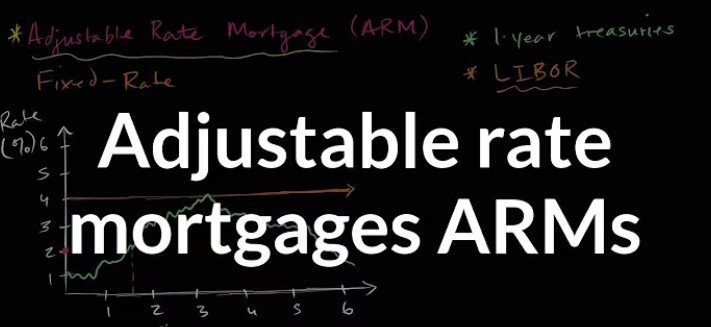Introduction to Adjustable-Rate Mortgages (ARMs)
When purchasing a home, one of the most important decisions a potential homeowner must make is choosing the right type of mortgage. Among the various options, adjustable-rate mortgages (ARMs) are becoming increasingly popular due to their flexibility and initial affordability. While they offer lower initial interest rates compared to fixed-rate mortgages, ARMs come with an inherent risk: the potential for rising interest rates. In this article, we’ll explore what ARMs are, how they work, their pros and cons, and factors to consider before deciding whether an adjustable-rate mortgage is the right choice for you.
What is an Adjustable-Rate Mortgage (ARM)?
An adjustable-rate mortgage (ARM), also known as a variable-rate mortgage, is a type of home loan where the interest rate is subject to change over time. These mortgages typically have a fixed interest rate for a specified period at the beginning of the loan term (usually 3, 5, 7, or 10 years). After this period, the interest rate adjusts periodically based on a financial index or benchmark, such as the LIBOR (London Interbank Offered Rate) or the SOFR (Secured Overnight Financing Rate).
Unlike fixed-rate mortgages, where the interest rate remains constant for the life of the loan, ARMs can have fluctuating rates, which means that the monthly mortgage payment can increase or decrease depending on changes in interest rates. The rate adjustments can occur annually or every six months, and the amount of change is usually capped by specific rate caps (a limit on how much the rate can adjust during any given period or over the life of the loan).
How Do Adjustable-Rate Mortgages Work?
To better understand how ARMs work, let’s break down the key components:
- Initial Fixed-Rate Period:
The first few years of an ARM (typically 3, 5, 7, or 10 years) feature a fixed interest rate. This rate is often lower than the rates offered by fixed-rate mortgages, making ARMs an attractive option for homebuyers who plan to sell or refinance within the first few years of ownership. - Adjustment Period:
After the initial fixed period, the interest rate adjusts periodically based on the performance of an underlying financial index. The adjustment frequency varies but is commonly every year. The new interest rate is determined by adding a margin (a fixed percentage) to the current index rate. - Index and Margin:
The index is a financial benchmark that fluctuates with the broader economy, such as the LIBOR or SOFR. The margin is a fixed percentage added to the index rate to determine the new interest rate. For example, if the margin is 2% and the index rate is 3%, the new rate would be 5%. - Rate Caps:
ARMs usually come with caps to protect homeowners from drastic interest rate hikes. There are three types of caps:- Initial Adjustment Cap: Limits the amount the interest rate can increase after the initial fixed-rate period.
- Periodic Adjustment Cap: Limits how much the interest rate can change during each subsequent adjustment period.
- Lifetime Cap: Sets a maximum interest rate that can be charged over the life of the loan, regardless of index changes.
- Loan Terms:
ARMs are typically offered in various term lengths, with the most common being 30 years. The loan term, along with the rate adjustments, will determine your monthly payments and how much you pay over the life of the loan.
Types of Adjustable-Rate Mortgages
There are several different types of ARMs, each with its own structure and terms. The most common types include:
1. 3/1, 5/1, 7/1, 10/1 ARMs
These are the most widely available ARMs. They feature a fixed interest rate for the first 3, 5, 7, or 10 years of the loan, followed by annual rate adjustments after the initial period. The numbers represent the number of years the interest rate remains fixed (first number) and the number of years the rate can adjust (second number). For example:
- A 5/1 ARM has a fixed rate for the first five years, after which the rate adjusts annually.
- A 7/1 ARM has a fixed rate for the first seven years, after which the rate adjusts annually.
2. Hybrid ARMs
A hybrid ARM is a combination of a fixed-rate mortgage and an adjustable-rate mortgage. Hybrid ARMs typically feature an initial fixed-rate period followed by an adjustable-rate period. For example, a 7/1 hybrid ARM would have a fixed rate for the first seven years, after which the interest rate would adjust annually.
3. Interest-Only ARMs
An interest-only ARM allows the borrower to pay only the interest on the loan for a certain period (typically 5 to 10 years), with no principal repayment. After the interest-only period, the borrower begins repaying both the principal and the interest. While this can lead to lower initial monthly payments, it can result in higher payments later on, as the principal balance starts to be paid off.
4. Payment-Option ARMs
A payment-option ARM offers the borrower several payment options, including:
- A minimum payment (often less than the interest due, which can lead to negative amortization).
- An interest-only payment.
- A fully amortizing payment (which covers both principal and interest).
Payment-option ARMs are more flexible, but they can also be more complex and risky, especially if the minimum payments are insufficient to cover the interest, causing the loan balance to increase.
Advantages of Adjustable-Rate Mortgages
ARMs can be appealing for a variety of reasons. Below are some of the key advantages that homebuyers may find attractive:
1. Lower Initial Interest Rates
One of the most significant advantages of ARMs is the lower initial interest rate compared to fixed-rate mortgages. This can result in significant savings in the early years of the mortgage, particularly for borrowers who plan to sell or refinance within a few years.
2. Potential for Lower Monthly Payments
Because ARMs often come with lower initial rates, borrowers may benefit from lower monthly payments in the early years of the loan. This can make ARMs particularly attractive to homebuyers who expect their income to increase or who plan to move or refinance before the rate adjusts.
3. Greater Flexibility
For borrowers who don’t plan on staying in the same home for an extended period, an ARM can offer flexibility. The lower initial rates can make homeownership more affordable during the first few years, and if the borrower moves or refinances before the rate adjusts, they can avoid the risks associated with rising rates.
4. Potential to Benefit from Falling Interest Rates
Since ARMs are based on an underlying financial index, borrowers can potentially benefit from falling interest rates. If the economy is stable or interest rates decline, the mortgage payment may decrease after the initial fixed-rate period.
Disadvantages of Adjustable-Rate Mortgages
While there are clear advantages to ARMs, they are not without their risks. Here are some potential drawbacks to consider:
1. Uncertainty and Risk of Rising Interest Rates
The most significant risk associated with ARMs is the potential for interest rates to increase after the initial fixed period. If interest rates rise significantly, your monthly payments can increase, potentially causing financial strain.
2. Higher Monthly Payments After the Fixed-Rate Period
Once the initial fixed-rate period ends, your interest rate will likely adjust based on current market conditions. This can lead to higher monthly payments, particularly if interest rates rise substantially. Borrowers who are not prepared for this adjustment may struggle to keep up with payments.
3. Potential for Negative Amortization
Some ARMs, especially interest-only or payment-option ARMs, can lead to negative amortization, where the monthly payments do not cover the full interest due. This can cause the loan balance to increase over time instead of decreasing, making it harder to pay off the loan in the future.
4. Complexity and Uncertainty
ARMs can be more complex than fixed-rate mortgages. Understanding how rate adjustments work, when the changes will occur, and how much the rate can increase can be challenging. Borrowers need to stay informed and be prepared for future rate hikes.
Key Factors to Consider Before Choosing an ARM
Before committing to an adjustable-rate mortgage, homebuyers should carefully consider the following factors:
1. How Long Will You Stay in the Home?
If you plan to move or refinance within the first few years, an ARM can be a cost-effective option, as you’ll likely benefit from the lower initial rates without having to worry about future rate adjustments.
2. Your Risk Tolerance
ARMs carry a level of risk because the interest rate can increase over time. If you’re not comfortable with this uncertainty, a fixed-rate mortgage may be a better option.
3. Your Financial Stability
Consider whether you will be able to afford higher payments if your interest rate increases. ARMs are best suited for borrowers who have stable or increasing incomes and are comfortable with the potential for higher payments in the future.
4. Future Interest Rate Trends
While it’s impossible to predict future interest rates with certainty, it’s important to understand current economic trends and how they might affect your mortgage payments. If rates are expected to rise, an ARM could become significantly more expensive over time.
Conclusion
Adjustable-rate mortgages can offer significant benefits, particularly for borrowers who plan to move or refinance before the rate adjusts or who are comfortable with some degree of risk. However, they also come with uncertainties and potential for rising payments, so they may not be suitable for everyone.
Before choosing an ARM, it’s essential to understand how the mortgage works, the type of ARM being offered, and whether it aligns with your long-term financial goals. Always consider consulting a financial advisor or mortgage expert to help you make the best decision for your circumstances.
In summary, ARMs can be a powerful tool for homebuyers who are looking for flexibility and lower initial payments, but they require careful consideration and planning to ensure they don’t lead to unexpected financial challenges in the future.







